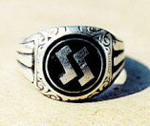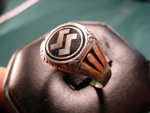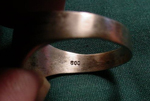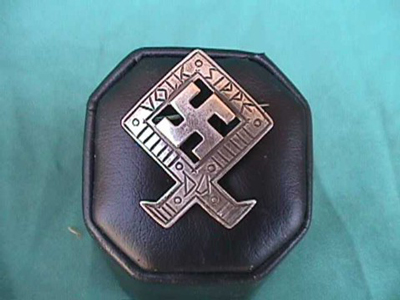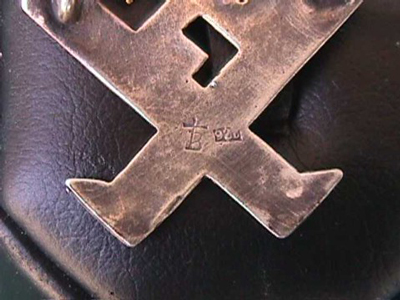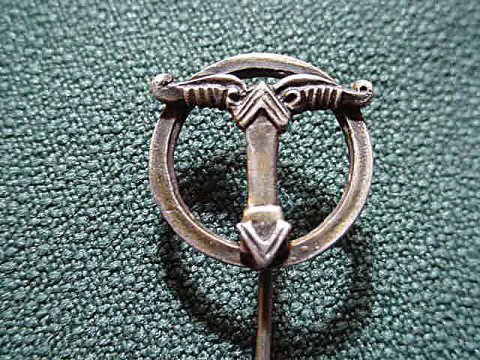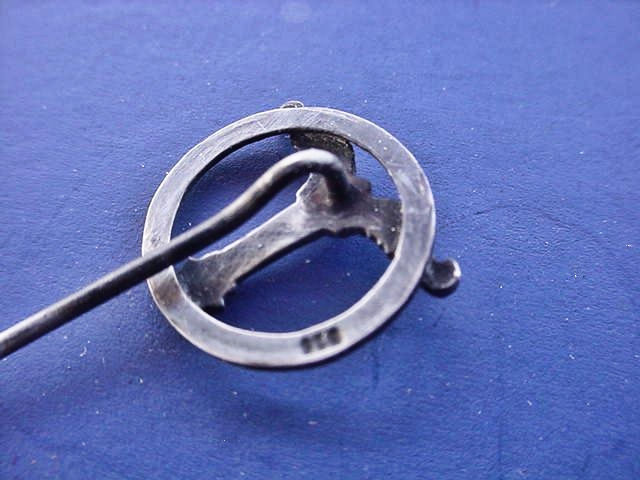|
[ Home Page ]
[ Third Reich ]
[ Old Reich ]
[ Kaiser Reich ]
[ Imperial Russia ]
[ Axis Powers ]
[ Italian Fascist ]
[ WW I ]
[ Landsknecht ]
[ Kaiser Wilhelm ]
[ Frederick the Great ]
Deutches Ahnenerbe
Page 1
|

|

SS-Standartenführer Wolfram Sievers, general manager and one of the early
founders of the Ahnenerbe. A brilliant academic scholar and organizer.
|
|
|
|
SS AHNENERBE RING (Item AHN 1-1)
|
| DESCRIPTION: This is a very rare ring of the ancestral heritage foundation, Deutsches Ahnenerbe, that was set up by H. Himmler in 1935. This was a learned society concerned with prehistory. It became a vast study group with expeditions to Tibet and actual occult studies and medical experiments. The ring bears the runes in a completely different mode or configuration. The way they are depicted would be similar to the usage in the true Germanic runes as shown on some of the shields of the ancient Norsemen, and that was a great part of the Ahnenerbe research. So it would be clearly in keeping with them to use it on the official members' rings. The 800 silver mark is distinguishable in the inner shank of the ring. This is one of the group that came from the Stuttgart negotiations (see our description of the various Victory Rings), Item SS 3-3. Two of the companies that items were liberated from had the Ahnenerbe- contract from the Reichsführer-
office and the WVHA (Central Office of the Administration and the Economy). The design for the ring was by Wolfram Sievers, who took its motif from pictures of Teutonic and Viking shields. Sievers was a member of the
since 19 August 1935. Organization and finance of the Ahnenerbe were in his hands as secretary-general of the society since its foundation. Professor Walter Wüst was its titular president. The Ahnenerbe organization of the
invented the technique of study and research groups made up of researchers coming from different intellectual disciplines, but all working on a common theme. This method is still used today, with success in practically all universities. Dr. Wilhelm Teudt, a former priest, who had a passion for German culture and was famous for his research and theses, joined the NSDAP in 1933. He also entered the Ahnenerbe-
and became director of the Department of the Externsteine and was concerned with rich excavations of the rocks and cliffs in the Teutoberg Forest where the German tribesmen of Arminus crushed the Roman legions of General Varus in the year 9 of our era. This place, sacred in German history, was a repository of the culture of the prehistoric age. Dr. Teudt made it a territory of extreme ideological interest for the where none but members of the society had the right to carry out excavations. A further objective of this prehistoric research was to gather up the largest amount of information on the oldest Germanic and Teutonic traditions; the
Ehrenring with death's head, for example. Symbolic runes employed were some of the fruits of this research. The initial purpose, however, was to rediscover and revive the past to the point that in doing so the future would emerge more beautiful. It must be kept fervently in mind that all of us live in the present, dream of the future, but our only learning must come from the past so long as that learning is directed and managed, whereby we study all cultures, but exalt our own glorious past, only then will we take on the mantel of racial greatness that we justly deserve. The 50 or so departments of the Ahnenerbe ranged from expeditions to Tibet and taking over prehistory departments of schools and museums; astronomical study; publishing many books and brochures, including the Deutsches Ahnenerbe, the Nordland, the Germanien; the establishment of the publishing house of Ahnenerbe Stiftung in Berlin in 1939; excavations at Viking sites; first experiments in the anticancer campaign; excavations in Greece, Poland, Slovakia; archaeological research in the Caucasians in 1942; and the protection of prehistoric tombs and sites in southern Russia in 1942. The research arms of this organization reached far and wide across Europe and Asia. The work of its cultural commission had results that are recognized as being far beyond its time. It was a definite positive factor in the
and National Socialism. Yes, there were studies in occult sciences, but as research only! The society was no "Merlin party" as is constantly indicated in the books and articles by trash diggers such as Ravenscroft in his book,The Spear of Destiny. As far as identifying insignia of this organization is concerned, two different rings, a lapel pin, and a patch or so were the only things that set the Ahnenerbe-
personnel aside from others of the RFSS staff. We, at Germania, are very proud to offer this very scarce ring now to the collecting public.
PRICE: $900.00; Extremely rare!
|
|
|
|
Badge of the SS Ahnenerbe (Item AHN 1-2)
|
| DESCRIPTION: This is a badge or pin that is obviously from the Deutsches Ahnenerbe. The ancestral heritage foundation, The Archeological Academic Study Group, that was the favorite department and pursuit of the Reichsführer- Heinrich Himmler. Although there was no particular insignia that has been directly associated with this department it seems that articles such as rings, brooches, and this great badge have shown up. Only a few of these badges have appeared over the past war years and they are still considered extremely rare. The Odel rune that is depicted, and the short-arm swastika are typical of Ahnenerbe usage, but the real key is the words Volk & Sippe. Sippe in translation can be family, tribe, kin, all terms used within the organizations everyday language. Where the 19th- and 20th-century Germans were more prone to use (familie), Verwandtschaft, Abstammung, etc. Sippe is closet to tribe and this was part of a promotion of the to return to old Teutonic-Nordic values as practiced when Germany still observed the tribal systems, at least when compared to civilization's abandonment of the warrior spirit, loyalty, virtue, and tribal community participation. All of these were meant to be reinstated in the NS People's Movement with the aid of the Ahnenerbe of the . The badge is in silver. The marking on the reverse appear 800 for silver content and another mark that may be the maker or designers logo. It measures 1 ½ inches tall X 1 ¼ inches wide. This is a dramatic-looking SS piece and extremely important in that it is Ahnenerbe connected.
PRICE: $1,250.00; Extremely rare!
|
|
|
|
Deutsches Ahnenerbe Stickpin (Item AHN 1-4; PINS 8-18)
|
| DESCRIPTION: The German Heritage Foundation did not have much in the way of distinctive insignia other that a ring or two and a Volk und Sippe badge worn on special occasions. Other than that they had this stickpin that featured the sacred Irminsul, or Life Tree of the ancient Saxon saga and religion. This was the symbol that was hewn from Wotan's ash tree that actually stood at the top of the Externsteine, or Rocks of the Sun at Detmold and adjacent to the Teutoberg Forest of Hermann fame. The Irminsul was destroyed by Karl der Grosse as the first act of the Diet of Worms in the 8th century, thus setting off a fierce and long war between the Saxons and Franks. The stickpin is in beautiful condition and is very rare. It's marked "825" on the back.
PRICE: $475.00
|
Contact Us
Please refer to item designator in parentheses in all correspondence.
Please E-mail for any additional information you may need.
If you prefer, contact 'Germania' at PO Box 68, Lakemont, GA 30552
or call at 706.782.1668.
Please! do not call during the wee hours of the morning. The best time for calling us is between 10 am and 12 noon and between 9 and 11 pm eastern time.
|

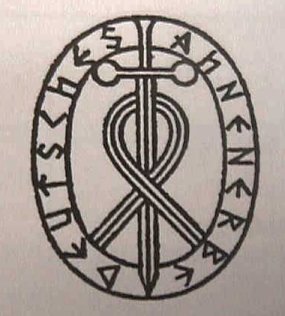
 -Ahnenerbe
-Ahnenerbe
















